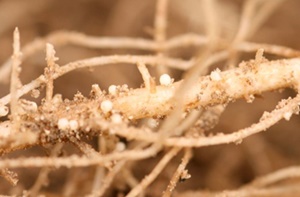L'importance, la biologie et la gestion des nématodes à kyste des céréales (Heterodera spp.) - revue bibliographique
Résumé
Les céréales sont exposées à des stress biotiques et abiotiques. Parmi les stress biotiques, les nématodes parasites des plantes jouent un rôle important dans la diminution du rendement des cultures. Les nématodes à kystes des céréales (CCNs) sont connus pour être une contrainte majeure à la production de blé dans plusieurs parties du monde. Des pertes économiques considérables dues aux CCNs ont été signalées. La reconnaissance et l'identification des CCNs sont un élément important dans la gestion des nématodes. Cet article passe en revue la répartition actuelle des CCNs dans différentes parties du monde et les progrès récents dans l'identification des nématodes. Les différentes approches de gestion des CCNs sont également discutées.
Mots clés: Céréales, gestion, identification, nématodes à kystes.
Téléchargements

Publié-e
Comment citer
Numéro
Rubrique
Licence

Revue Marocaine des Sciences Agronomiques et Vétérinaires est mis à disposition selon les termes de la licence Creative Commons Attribution - Pas d’Utilisation Commerciale - Partage dans les Mêmes Conditions 4.0 International.
Fondé(e) sur une œuvre à www.agrimaroc.org.
Les autorisations au-delà du champ de cette licence peuvent être obtenues à www.agrimaroc.org.

